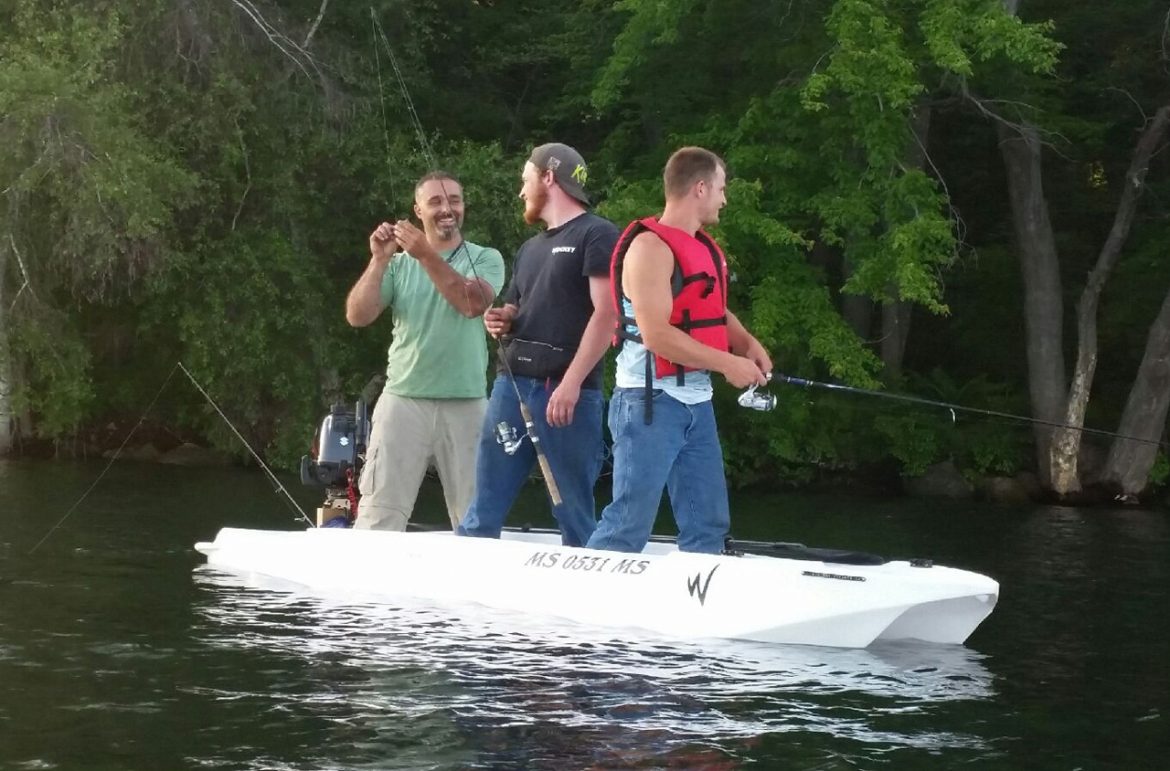Updated December 11, 2023
It seems like all fishing kayak manufacturers these days claim that at least one of their fishing kayak models lets you stand up and fish from. Some of them even go as far as say ‘in confidence’…
The problem with those claims is that they aren’t true, and the sure way for you to know that is by asking yourself a basic, simple and essential question:
What if? What if you lose your balance for any reason, just because stuff happens?
And as you probably know, in kayaks, stuff happens is the rule, not the exception. Typically, it’s small stuff, like a gust of wind, a motorboat’s wake hitting unexpectedly, someone calling your name which makes you turn your head, a fly, a bird, a moment when you let your thoughts wander, your kayak drifting and hitting the bottom or a submerged log while you’re focusing on your line, or just a fish… Yes, some fish can be quite strong, especially those fish you’d like to catch – certainly strong enough to make you lose your balance when they bite and start vigorously pulling on your line, and most likely not in a direction that would make it easy for you…
Any of these things can destabilize you, and sooner than later it will. And then what? You’ll tip over and fall overboard, because that’s the only solution all those wishful-thinking stand up SIK and SOT fishing kayaks have to offer you. And when that accident happens you’ll get wet, and some of your precious gear and tackle (or all of it) would get lost, and that’s too bad. You might also catch a cold…
And let us not forget that all those pseudo stand-up fishing kayaks are not stable enough to begin with: The very form and structure of those monohull kayaks is inherently unstable (read article about kayak stability). It’s helpful to remember that all of them were developed out of the native Inuit kayaks, which were supposed to enable performing the ‘Eskimo Roll’ – if you’re sitting inside… Not a practical option for the great majority of kayak paddlers, and not a solution for anyone attempting to fish while standing on top of a kayak. Understanding this is a matter of common sense – You don’t have to be a kayak designer to realize that a kayak that’s barely stable enough for you to feel fully at ease while fishing sitting cannot support a full size, adult fisherman standing on top of it, and still be safe.
BTW, none of these facts has ever prevented any kayak manufacturer from hyping their kayaks as being ‘stand up fishing’ kayaks. People want to stand up while fishing, and they want small, portable and inexpensive boats like kayaks. Naturally, kayaks manufacturers want to satisfy this demand, at least verbally….
There is only one fishing kayak out there that has a real, dependable, tested solution: Our Wavewalk kayaks.
To begin with, the Wavewalk the only watercraft out there that was invented and designed specifically for stand up paddling in all types of water: flat water, streams and surf. We have a US utility (invention) patent on it.
Each of the Wavewalk kayak’s twin hulls offers sufficient lateral buoyancy to support strong and sudden shifts in load, which is what happens when you lose your balance. Your feet are planted at the bottom of the hulls, below waterline – exactly where you can tap the hulls’ buoyancy to the maximum.
The Wavewalk kayak’s high saddle seat is positioned between your legs, which is exactly where it would be the most helpful to you when you’ll need to lower your center of gravity both suddenly and intuitively in order to regain your balance and keep your kayak from tipping over.
Bottom line: Marketing hype won’t make you stabler if you try to fish standing from an inadequate kayak platform that’s bound to send you overboard sooner than later. Having no plan B when your plan A is too shaky is a strategy that you’re bound to regret.
You need a specially designed, real-life tested and truly dependable fishing kayak for stand up fishing, and there’s only one such kayak that can answer these requirements: the Wavewalk.
More on fishing and paddling standing in kayaks »
Do you have any questions for us?


